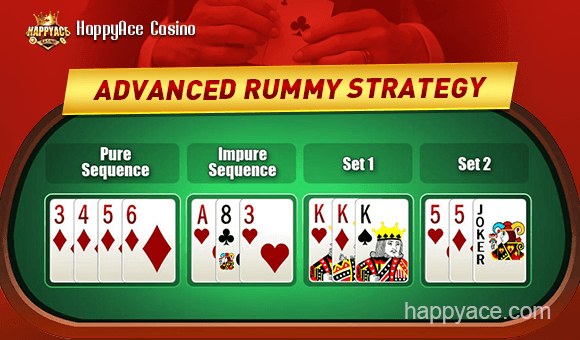In this article, we'll explore step-by-step how to read patterns in your hand, track opponents' behavior, and use advanced techniques to sharpen your gameplay. By the end, you'll understand how to transform your strategy, increase your win rate, and enjoy the game at a higher level.

Why Card Pattern Analysis Is the Foundation of Advanced Rummy
Rummy is often considered a game of both luck and skill. While the drawing of each card involves chance, how you interpret and use the cards is entirely up to you. Card pattern analysis in Rummy helps you:
- Identify potential sequences quickly, so you waste less time on dead cards.
- Anticipate your opponents' strategies by tracking their discards and picks.
- Avoid giving away useful cards that could help others complete their sets.
- Adapt to changing circumstances, such as when opponents block your sequence.
Step 1: Break Down Your Hand Early
One of the first advanced strategies you should master is hand classification. As soon as you receive your cards, categorize them into three groups:
Probable pure sequences (essential to win).
Potential sets or sequences that can be developed.
High-value or unrelated cards that are likely to be discarded.
This quick evaluation ensures you immediately know which cards are "keepers" and which ones you can let go. The sooner you recognize patterns, the sooner you can build winning combinations.
Step 2: Track Opponents' Card Behavior
In advanced Rummy, success depends as much on your opponents' hands as on your own. Observing their moves gives you clues about their possible sequences.
- Watch the discard pile carefully. If an opponent discards a 9 of Clubs but later picks up an 8 of Clubs, you can assume they're working on a sequence in that suit.
- Note repeated discards. If someone consistently discards high-value Hearts, they're probably not working on that suit.
- Be cautious with your discards. Don't throw away connectors (like 6 or 7 of the same suit) if your opponent is showing interest in nearby numbers.
Step 3: Use Flexible Cards to Keep Options Open
Not all cards are equal—some are highly flexible and can fit into multiple sets or sequences. For example:
- A 5 of Diamonds can work in a sequence like 4-5-6 or as part of a set like 5-5-5.
- AKing of Spades can complete both a sequence (Q-K-A) or a set (K-K-K).
Step 4: Manage Joker Cards Strategically
Jokers are often underestimated in Rummy advanced gameplay. Many beginners rush to use them early, but experienced players know that jokers are best reserved for difficult-to-complete combinations.
- Don't waste a Joker on an easy set. Use it where natural cards are harder to find.
- Keep the Jokers hidden until the endgame. Revealing your Joker too soon signals your strategy to opponents.
- Combine Jokers with high-value cards. This minimizes the penalty if an opponent declares first.
Step 5: Balance Aggression and Defense
Advanced Rummy is a balance between building your own hand aggressively and defending against your opponents. Here's how card analysis helps:
- Aggressive play: Focus on building pure sequences quickly and arranging cards into multiple combinations.
- Defensive play: Track which suits your opponents want and withhold or discard strategically to block their progress.
Step 6: Recognize Deadwood and Reduce Risk
Deadwood refers to cards that don't contribute to your sequences or sets. Holding too many of them increases your penalty if an opponent declares.
- Prioritize discarding high-value deadwood like Aces, Kings, and Queens.
- Replace deadwood with middle-value connectors (like 6s and 7s) that are easier to merge into sequences.
- Use pattern analysis to see if your deadwood could become useful later before discarding.
Step 7: Adapt to Different Rummy Variants
Different Rummy formats—such as Indian Rummy, Gin Rummy, and Points Rummy—require adjustments to your analysis approach.
- In Gin Rummy, tracking discards is even more critical because you can't use Jokers.
- In Indian Rummy, two sequences (one pure) are mandatory, so prioritize those immediately.
- In Deals Rummy, long-term pattern analysis across multiple rounds can give you an edge.
Long-Term Benefits of Card Pattern Analysis
By mastering card pattern analysis in Rummy, you gain several long-term advantages:
- Consistency: You rely less on luck and more on skill.
- Confidence: You'll make faster, sharper decisions under pressure.
- Control: You can steer the game's pace by forcing opponents into mistakes.
- Higher win rate: Advanced strategies directly translate into more victories.
Final Thoughts
If you've been relying on luck or basic rules, it's time to upgrade your gameplay with Rummy advanced strategies through card pattern analysis. From hand classification to opponent tracking, flexible card usage, and strategic defense, every decision you make can tilt the odds in your favor.
The key takeaway is this: Rummy rewards players who think ahead. By analyzing patterns in both your hand and your opponents' moves, you transform from a casual player into a skilled strategist. The more you practice, the sharper your instincts will become, and the more consistently you'll win.
Next time you sit at the Rummy table—online or offline—remember: it's not just the cards you hold, but how you analyze them that determines your success.










